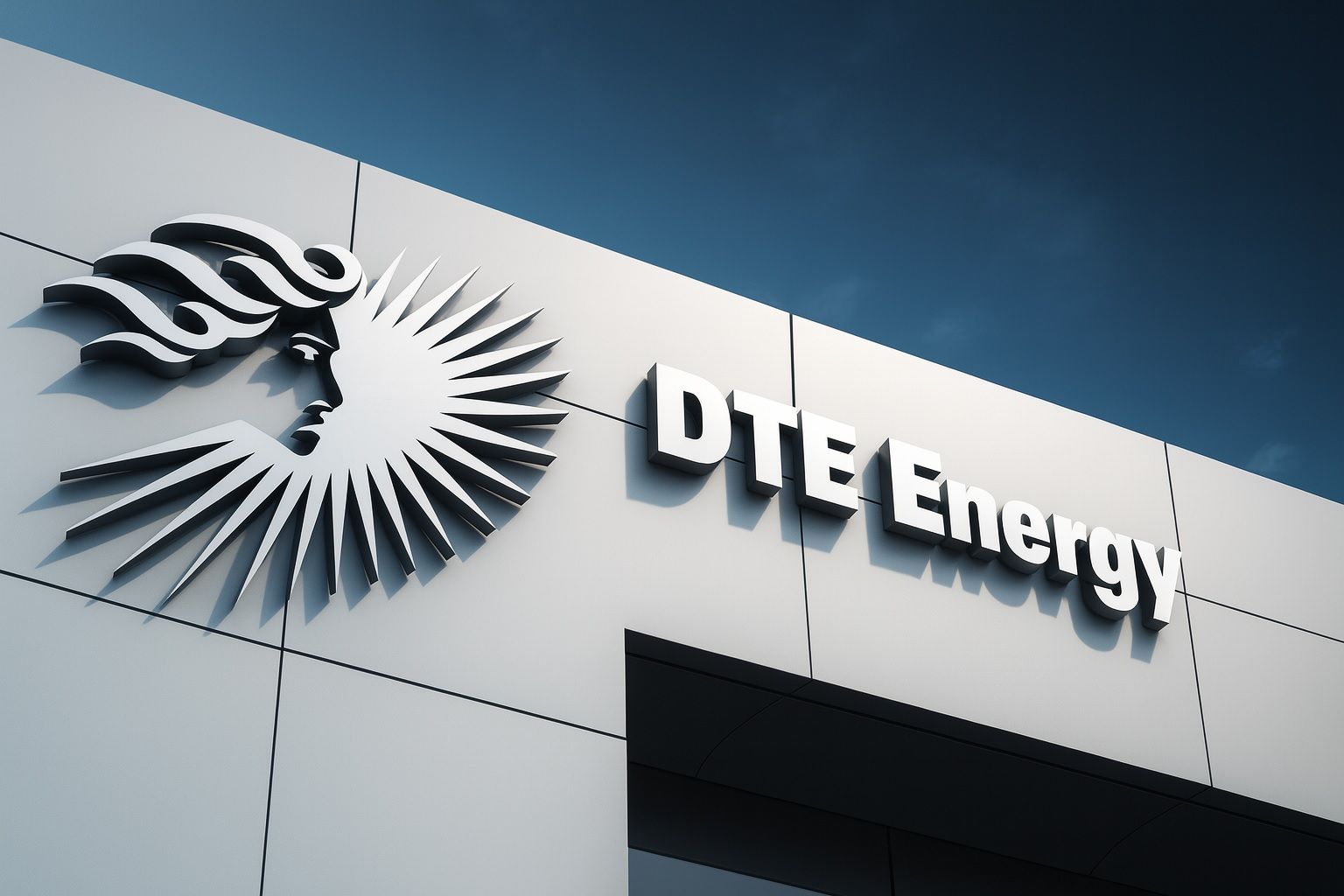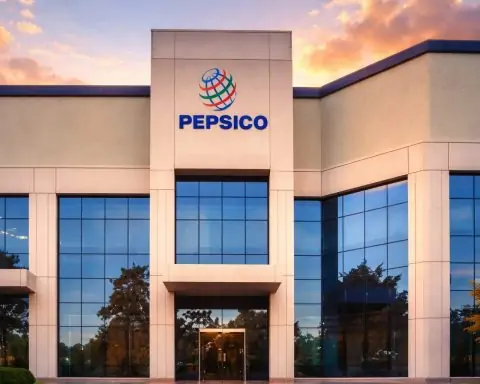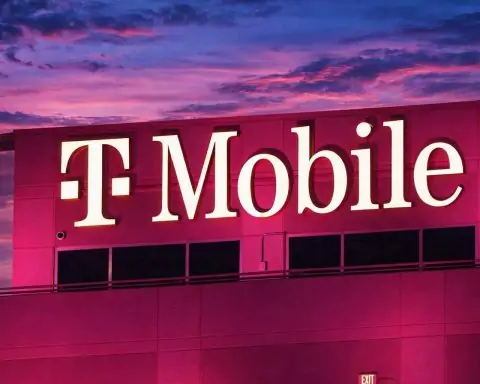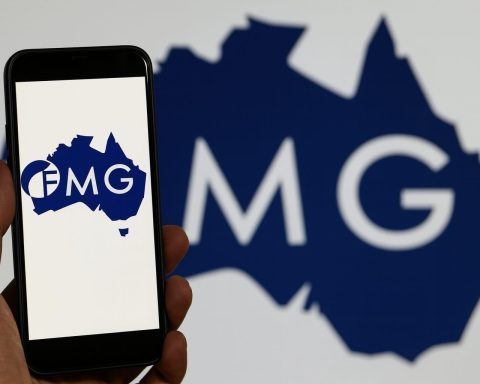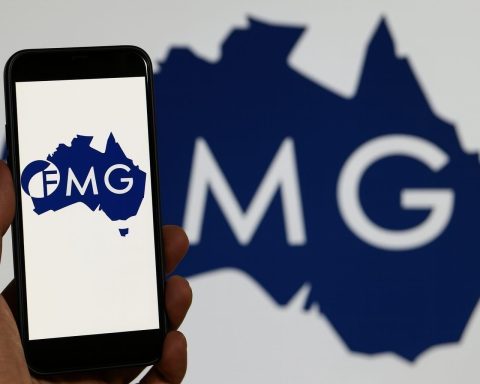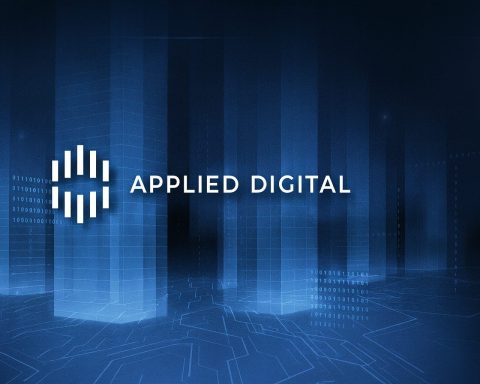- State on Track for 50% Renewable Power by 2030: Michigan’s major utilities will have 8,300 MW of renewable energy online by the end of 2025 – roughly equivalent to eight large fossil-fuel plants – and that capacity is set to more than double by 2030 [1]. Both DTE Energy and Consumers Energy report they are on pace to meet Michigan’s 50% renewable electricity mandate by 2030 (with an interim goal of 60% by 2035 and 100% clean energy by 2040) [2].
- Utilities Invest Billions in Wind & Solar: DTE and Consumers are pouring resources into new solar farms and wind parks to hit these targets. “Since 2009, DTE has invested $4.6 billion in renewable energy, and we plan to invest an additional $4 billion over the next several years – building ~900 megawatts of renewables per year on average over the next five years,” DTE said in a statement [3]. Consumers’ latest plan calls for adding up to 9,000 MW of solar and 2,800 MW of wind this decade [4]. These expansions align with Michigan’s recently enacted clean energy law requiring 60% renewables by 2035 [5]. Both utilities insist they can hit the goals, thanks to accelerating projects and rising demand for clean power.
- Grants Fuel Local Renewable Projects: This week, state regulators awarded $5 million in grants to 14 community projects to boost renewable infrastructure [6]. In Michigan’s Upper Peninsula, the non-profit Superior Watershed Partnership (SWP) secured $358,074 to expand home energy efficiency and install solar panels on low-income homes [7] [8]. “Improve the energy efficiency in your home… [to] lower your utility bill, but then also lower… energy consumption,” said SWP coordinator Kathleen Henry of the home energy upgrades [9]. The grant will also fund a new fast-charging station for electric vehicles to help rural drivers; Michigan’s climate plan calls for building enough infrastructure to support 2 million EVs on the road by 2030 [10].
- Solar Surge Brings Big Community Benefits: Renewable energy isn’t just cutting emissions – it’s delivering economic windfalls for Michigan communities. Large solar farms are pumping millions in tax revenue into rural counties, funding public services like road repairs, schools, and emergency responders [11]. “The Polaris Solar [100 MW] project… will benefit police departments, county parks, and local government entities… Where some counties are looking at cutbacks, we haven’t had to do that. Here, renewable energy helps improve the overall quality of life,” said Jim Wheeler, a local economic development leader, about DTE’s newest solar park [12]. Michigan’s clean-energy push has also created an estimated 20,000 green jobs across the state since 2009 [13], and more growth is expected as new projects break ground.
- DTE Stock Near Highs as Investors Eye Clean Energy Pivot: DTE Energy’s stock (NYSE: DTE) is trading around $139 per share, hovering near its 52-week high (~$142) [14]. Wall Street analysts have a “Moderate Buy” consensus on DTE, with an average 12-month price target of about $144 [15]. The modest upside reflects steady utility earnings and confidence that DTE’s massive grid upgrades and renewable build-out will pay off. “We will continue making these significant investments, providing even more reliable, affordable and cleaner energy for our customers, which is critical to Michigan’s future,” affirmed Jerry Norcia, DTE’s (recently outgoing) CEO [16] [17]. However, regulators are pressing utilities to keep rates in check – the state Attorney General urged slashing DTE’s proposed rate hike by 75% amid customer concerns [18] – so companies must balance growth with affordability.
Michigan Races Toward 50% Renewable Power
Michigan’s clean energy transition has reached a major inflection point. A new report from the Michigan Public Service Commission confirms the state’s regulated utilities will end 2025 with over 8.3 gigawatts of renewables online, and “that capacity will more than double by 2030,” despite some uncertainties around federal tax credit phase-outs and trade tariffs [19]. This rapid expansion puts Michigan on track to meet ambitious new standards signed into law by state leaders: 50% renewable electricity by 2030, 60% by 2035, and 100% carbon-free power by 2040 [20].
Experts say these targets are not only achievable – they may be essential as energy demand climbs. Laura Sherman, president of the Michigan Energy Innovation Business Council, noted that electricity use is set to surge due to electrification of homes, vehicles, and industry. “Some of the new electric load… is going to be gradual as we electrify homes, buildings, transportation,” Sherman explained. “But some of it’s going to be really fast. Data centers can be built very quickly… a wind or solar plant can be in place within six to eight months [where] a natural gas plant might take five to seven years” [21]. In other words, renewable projects can ramp up faster than fossil fuel plants to meet sudden spikes in demand. Michigan is already seeing this trend play out – utility DTE Energy is reportedly in talks to supply 3+ gigawatts of power for new artificial-intelligence data centers in the state (with potential data center demand over 7 GW) [22], highlighting the need for swiftly deployable clean energy capacity.
Both of Michigan’s largest utilities insist they are ahead of schedule. Consumers Energy, which serves much of the state outside metro Detroit, says it will file an updated Integrated Resource Plan in 2026 to reflect big new investments – up to 9 GW of solar and 2.8 GW of wind – that will enable it to hit 60% renewables by 2035 and 100% clean power by 2040 [23] [24]. DTE Energy likewise announced it is “on track to meet the 50% renewable target” by 2030 [25]. Each company has been accelerating project timelines to ensure interim milestones are met. By 2025 alone, DTE will have brought three new solar parks online, including the recently completed 80 MW Pine River Solar Park (capable of powering ~20,000 homes) [26]. Five more utility-scale solar installations are already under construction [27]. This burst of projects represents “the most active period of renewable energy development in DTE’s history,” the utility said in June [28].
State leaders have put clear policy winds at the utilities’ backs. Governor Gretchen Whitmer and the legislature approved a landmark clean energy package in late 2023, locking the above renewable standards into law [29]. That policy certainty – combined with federal incentives from the Inflation Reduction Act – has unleashed a wave of investment. Just this month, the Biden administration awarded $129 million to Michigan to bolster its MI Healthy Climate Plan, money that will help communities install more solar panels and EV chargers statewide [30] [31]. The end goal: position Michigan as a Midwestern clean energy leader, slashing carbon pollution while creating local jobs.
Billions Pour Into Clean Energy – and the Grid
To reach these goals, Michigan’s utilities are spending at unprecedented levels on renewable energy and grid modernization. DTE Energy – the state’s largest power company – has committed to roughly $10 billion in grid upgrades from 2023 through 2029, aimed at improving reliability and integrating more renewables [32]. This smart-grid overhaul is already delivering results: DTE’s advanced automation systems prevented over 16,000 outages so far in 2025, a notable improvement for a grid that suffered some of the nation’s longest outage restoration times in recent years [33] [34].
On the generation side, wind and solar farms are springing up across Michigan. Consumers Energy’s latest renewable plan (approved by regulators in September) accelerates the build-out of solar in particular, reflecting the plunging cost of photovoltaic technology. The utility expects to bring several gigawatts of solar online in the next decade, replacing retiring coal plants and even outpacing natural gas additions [35]. DTE, for its part, touts itself as “Michigan’s largest producer and investor in renewable energy,” with 20 wind parks and 33 solar parks already producing power for over 800,000 homes [36]. DTE’s voluntary MIGreenPower program – which lets customers subscribe to renewable energy – is helping fund many of these new projects and currently has nearly 100,000 participants statewide [37]. All of this feeds into DTE’s commitment to achieve net-zero carbon emissions by 2050, closely mirroring Michigan’s long-term climate ambitions [38].
Company executives stress that these investments aren’t just about hitting a target – they’re about ensuring a reliable and affordable transition. “We will continue making these significant investments, providing even more reliable, affordable and cleaner energy for our customers, which is critical to Michigan’s future,” DTE’s CEO Jerry Norcia recently affirmed [39]. To maintain reliability as they add intermittent renewables, utilities are pairing renewable projects with grid upgrades and some natural gas backup. MPSC Chairman Dan Scripps pointed out that after the Upper Peninsula’s aging coal plant closed a decade ago, new gas-fired generators were built to secure the grid – and now that backbone is enabling more wind and solar to come online “that don’t have fuel costs” [40]. In other words, a modernized grid with flexible resources can handle an influx of cheap renewable power without sacrificing stability.
One challenge utilities face: balancing the huge upfront costs of these projects with customer rate impacts. Michigan’s Attorney General and consumer advocates have pushed back on recent rate increase requests, arguing that utilities should tighten belts even as they invest in the future [41]. Regulators appear sympathetic – they approved a far smaller hike than DTE initially sought. Still, analysts say the clean energy build-out is a long-term win-win: it leverages federal funding, reduces fuel and maintenance costs, and shields customers from fossil fuel price swings. Major Michigan businesses (from automakers to tech firms) also want cleaner electricity, providing political and economic support for the utilities’ spending spree.
State Funds Supercharge Solar and EV Infrastructure
Michigan isn’t leaving the clean energy boom purely to the big utilities. The state and federal governments are actively funding local renewable projects to ensure the benefits reach every corner of the state. On October 14, the Michigan Public Service Commission announced nearly $5 million in grants under a new Renewable Energy Infrastructure program, directing dollars to solar, energy storage, and electric vehicle charging initiatives [42]. Fourteen projects won funding, including several in underserved rural and tribal communities.
Among the winners was the Superior Watershed Partnership (SWP), a Marquette-based non-profit focused on sustainability in the Upper Peninsula. SWP received $358,074 to expand two of its flagship programs: home energy upgrades and community solar for low-income households [43] [44]. “The grant will help expand current services, like conducting 25 home energy assessments,” said SWP project coordinator Kathleen Henry, referring to free energy audits that identify how families can cut waste and bills [45]. By weatherizing homes and installing new efficient appliances, residents can save money and reduce overall demand on the grid. In turn, Henry said, “that will lower your utility bill, but also lower the actual energy consumption that you’re using” [46] – a win-win for households and Michigan’s energy efficiency goals.
Another portion of SWP’s grant will fund five residential solar panel installations for income-qualified families [47]. Each rooftop system can cover roughly 35% of a home’s electricity needs, providing long-term relief from high energy costs – especially during the U.P.’s harsh winters when heating bills spike [48]. Projects like this directly support Michigan’s target of helping 150,000 lower-income households access solar by 2030, part of the broader MI Healthy Climate Plan. The state is also encouraging community solar gardens and other distributed renewable projects through new “Solar for All” programs (though a major federal Solar for All grant earmarked for Michigan was recently put on hold by the EPA, pausing $156 million for low-income solar installations [49]).
Electric vehicles are another key piece of Michigan’s clean energy strategy – fittingly, for the home of the auto industry. But EV adoption in remote areas has lagged due to a lack of charging stations. The MPSC grants aim to fix that, funding new chargers in several locations. In Marquette, SWP will use part of its grant to install a DC fast-charging station (Level 3) for EVs [50]. “It will help fill some of the gaps surrounding electric vehicle charging in the U.P.,” Chairman Dan Scripps noted, adding that expanding charging infrastructure is essential to meet the state’s goal of 2 million EVs on Michigan roads by 2030 [51]. As more chargers appear in public places, residents will gain confidence that they can drive electric vehicles even across Michigan’s rural stretches. Henry observed that simply seeing new EV chargers or solar panels pop up around town helps “normalize” these technologies for people. “Having more of the infrastructure available will… assist people in that transition, whether that be an electric vehicle, [or] solar, [by] kinda normalizing that,” she said of the changing landscape [52].
These community-level investments complement larger initiatives like the $129 million federal grant Governor Whitmer announced on Oct. 1, which will fund projects from urban solar installations to workforce training, all geared toward lowering costs and creating jobs through clean energy [53] [54]. The infusion of funding at multiple levels of government has Michigan charging forward on its climate goals “faster than we’ve ever seen,” as one state official put it. And unlike past economic booms that were concentrated in Metro Detroit, the renewable energy boom is statewide – bringing EV chargers to the Upper Peninsula, wind farms to the Thumb, and solar arrays to former industrial sites and farm fields across both peninsulas.
Solar Projects Shine for Communities and Taxpayers
Beyond the environmental upside, Michigan’s pivot to renewable energy is delivering tangible economic benefits on the ground – especially in rural areas that host wind and solar developments. Local officials are increasingly vocal about the new revenue and jobs flowing from clean energy projects. A recent Detroit News op-ed highlighted how a single utility-scale solar farm can pour hundreds of thousands of dollars annually into a county’s budget, easing the burden on taxpayers and funding better services [55]. Over a project’s lifetime, this can add up to millions for things like roads, schools, police and fire departments. Unlike traditional power plants, which often sent fuel and profits out of state, renewable projects tend to hire locally and pay taxes directly to the township or county where they sit.
Gratiot County offers a case in point. Once an area struggling with declining industry, Gratiot has become a clean energy hub, hosting multiple DTE wind parks and the new 100 MW Polaris Solar Park. DTE’s three existing wind farms in the county already generated $42 million in tax revenue for local governments [56], and now the Polaris solar project is bringing “substantial tax revenue” to the county’s coffers as well [57]. Those dollars have kept Gratiot’s public services well-funded, according to Greater Gratiot Development President Jim Wheeler. “Polaris Solar is a significant investment… a project that will benefit police departments, county parks, and local government entities throughout our communities,” Wheeler said at the site’s ribbon-cutting [58]. While other rural counties face budget crunches and even consider cuts, “we haven’t had to do that” in Gratiot, Wheeler noted. Renewable energy revenue “helps improve the overall quality of life for the county and the people who live in it” [59].
Similar stories are emerging in other parts of Michigan. In Shiawassee County, for example, a $250 million solar farm was approved this fall and is expected to create 300 construction jobs and boost local household earnings by $3.2 million during build-out [60]. Over its life, that Shiawassee project will also pay tens of millions in taxes. These direct economic benefits are winning over skeptics of renewable energy at the local level. Even some who were initially unsure about wind turbines or solar panels on farmland are seeing the upside. Local governments are using renewable revenues to fix roads and bridges, improve emergency response, and even lower property tax rates for residents. And because wind and solar fuel is free (sunshine and wind), energy prices are less volatile in the long run – a relief to farmers and manufacturers used to roller-coaster propane or diesel costs.
Michigan’s clean energy transition has also opened new career paths. The state now boasts a growing clean energy workforce of technicians, engineers, construction workers, and maintenance crews. DTE alone estimates its renewable projects have helped create around 20,000 jobs in Michigan since 2009 [61], from the building of massive wind turbine components to the ongoing maintenance of solar arrays. Training programs at community colleges are ramping up to feed the demand for solar installers and EV charger technicians. Governor Whitmer often touts that “climate action means jobs”, and in Michigan’s case, that’s increasingly evident in communities that have welcomed clean energy development.
Of course, not everyone embraces these projects without reservations – some residents have raised concerns about viewsheds (the visual impact of turbines or panels) and land use. Michigan’s approach has been to encourage community input and benefits agreements so that locals have a say in how projects are sited and can share in the profits. That inclusive strategy seems to be paying off: a 2025 statewide survey found a record-high majority of Michiganders support expanding wind and solar, seeing it as a path to both cleaner air and economic revival in areas that need investment.
Outlook: Challenges Ahead, but Momentum Builds
As of October 2025, Michigan’s renewable energy revolution appears to be full steam ahead (or perhaps more aptly, full wind ahead). The state’s policy commitments are in place, utilities are investing heavily, and early results – from carbon reductions to community payoffs – are encouraging. But energy experts caution that the next phase won’t be without hurdles.
One looming challenge is the phaseout of federal tax credits for clean energy. Generous credits for solar and wind projects (30% or more of project costs) have underpinned much of the current boom. Starting in 2025 and 2026, some of these incentives begin to step down or expire [62]. Unless extended by Congress, Michigan developers will face higher costs, which could slow the pace of new builds. Additionally, recent trade tariffs on solar panels and supply chain bottlenecks have introduced uncertainty [63]. Developers are already reporting longer lead times for turbines and transformers – components critical to hitting Michigan’s 2030 goals on schedule.
Grid reliability is another focus area. As coal plants retire (Consumers Energy will shut its last coal plant by 2025, years ahead of schedule [64]) and renewables take on a greater share, maintaining year-round reliability will require careful planning. Michigan’s plan leans on a combination of energy storage, peaker plants, demand response programs, and regional power imports to ensure the lights stay on during calm or cloudy days. The state’s first utility-scale battery projects are now coming online, and utilities must meet a new requirement for 2,500 MW of energy storage by 2035 [65]. Technology is racing to improve: cheaper batteries, smart thermostats, and even vehicle-to-grid systems (using parked EVs as mini power plants) could all help balance the grid in the near future.
Despite these challenges, the overall outlook is optimistic. Michigan’s political leadership from both parties is increasingly supportive of clean energy as a driver of economic growth. The state that put America on wheels is determined not to miss the next energy revolution. “This is about taking charge of our energy future – lowering costs for families, creating good-paying jobs, and protecting the Great Lakes for future generations,” Gov. Whitmer said in a recent statement announcing the federal climate funds [66]. Her administration emphasizes that every dollar invested now in clean energy will pay dividends in health benefits and stable energy bills later.
Crucially, Michigan’s big utilities and businesses are aligned on the transition. Automakers like GM and Ford have set their own targets for carbon-neutral operations, which means they need the grid to get cleaner. Tech companies scouting Michigan for new data centers or EV battery plants likewise want renewable energy options (a key reason behind DTE’s aforementioned discussions to supply gigawatts of power to tech firms [67]). This broad coalition – spanning environmental groups, industry, and utility companies – gives the state a solid foundation to keep its green momentum going.
On the finance side, investors are cautiously cheering Michigan’s progress. Traditional utility stocks aren’t known for wild swings, but DTE’s share price strength signals confidence in its strategy. As noted, DTE [NYSE:DTE] shares are near all-time highs around $139, with analysts expecting only gentle upside from here [68]. That’s in part because a lot of the good news (steady earnings, stable dividends, and growth projects in the pipeline) is already priced in. Still, the fact that DTE is outperforming many peers shows that Wall Street sees Michigan’s clean energy plan as achievable and financially viable [69] [70]. The company offers a ~3.2% dividend yield, which it has increased four years in a row [71], reassuring investors that going green hasn’t hurt its profitability. Smaller Michigan-focused energy firms and suppliers are also drawing interest as federal grants and contracts roll out statewide.
In the coming months, watch for key developments that will shape Michigan’s energy future: the release of utility Integrated Resource Plans aligning with the new 100% clean power requirement, potential legislative tweaks to encourage community solar and rooftop solar, and the deployment of funds from the federal Infrastructure Law for grid improvements. Each will be an important piece of the puzzle. But as of late 2025, one thing is clear: Michigan has flipped the script from Rust Belt to Green Belt, embracing renewable energy as not just an environmental imperative, but as the engine of its next economic chapter. The race to 50% renewables by 2030 is on – and Michigan is charging forward with unprecedented momentum [72].
Sources:
- Michigan Public Service Commission – 2025 Renewable Energy Report (via Planet Detroit/Michigan Radio) [73] [74]
- Upper Michigan’s Source (WLUC-TV6) – MPSC awards grants for renewable energy [75] [76]
- The Detroit News (Opinion) – Solar Projects’ Local Benefits (cited via SolarQuarter) [77] [78]
- TS2.Tech – Energy News & DTE Analysis [79] [80]
- Michigan.gov Press Release – Whitmer on Clean Energy Investment [81] [82]
References
1. www.interlochenpublicradio.org, 2. www.interlochenpublicradio.org, 3. www.interlochenpublicradio.org, 4. www.interlochenpublicradio.org, 5. www.interlochenpublicradio.org, 6. www.uppermichiganssource.com, 7. www.uppermichiganssource.com, 8. www.uppermichiganssource.com, 9. www.uppermichiganssource.com, 10. www.uppermichiganssource.com, 11. solarquarter.com, 12. solarquarter.com, 13. solarquarter.com, 14. ts2.tech, 15. ts2.tech, 16. ts2.tech, 17. ts2.tech, 18. ts2.tech, 19. www.interlochenpublicradio.org, 20. www.interlochenpublicradio.org, 21. www.interlochenpublicradio.org, 22. ts2.tech, 23. www.interlochenpublicradio.org, 24. www.interlochenpublicradio.org, 25. www.interlochenpublicradio.org, 26. ts2.tech, 27. ts2.tech, 28. solarquarter.com, 29. www.climatepolicydashboard.org, 30. www.michigan.gov, 31. www.michiganlcv.org, 32. ts2.tech, 33. ts2.tech, 34. ts2.tech, 35. www.interlochenpublicradio.org, 36. empoweringmichigan.com, 37. empoweringmichigan.com, 38. ts2.tech, 39. ts2.tech, 40. www.uppermichiganssource.com, 41. ts2.tech, 42. www.uppermichiganssource.com, 43. www.uppermichiganssource.com, 44. www.uppermichiganssource.com, 45. www.uppermichiganssource.com, 46. www.uppermichiganssource.com, 47. www.uppermichiganssource.com, 48. www.uppermichiganssource.com, 49. planetdetroit.org, 50. www.uppermichiganssource.com, 51. www.uppermichiganssource.com, 52. www.uppermichiganssource.com, 53. www.michigan.gov, 54. www.michiganlcv.org, 55. solarquarter.com, 56. solarquarter.com, 57. solarquarter.com, 58. solarquarter.com, 59. solarquarter.com, 60. www.mieibc.org, 61. solarquarter.com, 62. www.interlochenpublicradio.org, 63. www.interlochenpublicradio.org, 64. www.consumersenergy.com, 65. www.mi-water.org, 66. www.michiganlcv.org, 67. ts2.tech, 68. ts2.tech, 69. ts2.tech, 70. ts2.tech, 71. ts2.tech, 72. www.interlochenpublicradio.org, 73. www.interlochenpublicradio.org, 74. www.interlochenpublicradio.org, 75. www.uppermichiganssource.com, 76. www.uppermichiganssource.com, 77. solarquarter.com, 78. solarquarter.com, 79. ts2.tech, 80. ts2.tech, 81. www.michigan.gov, 82. www.michiganlcv.org
